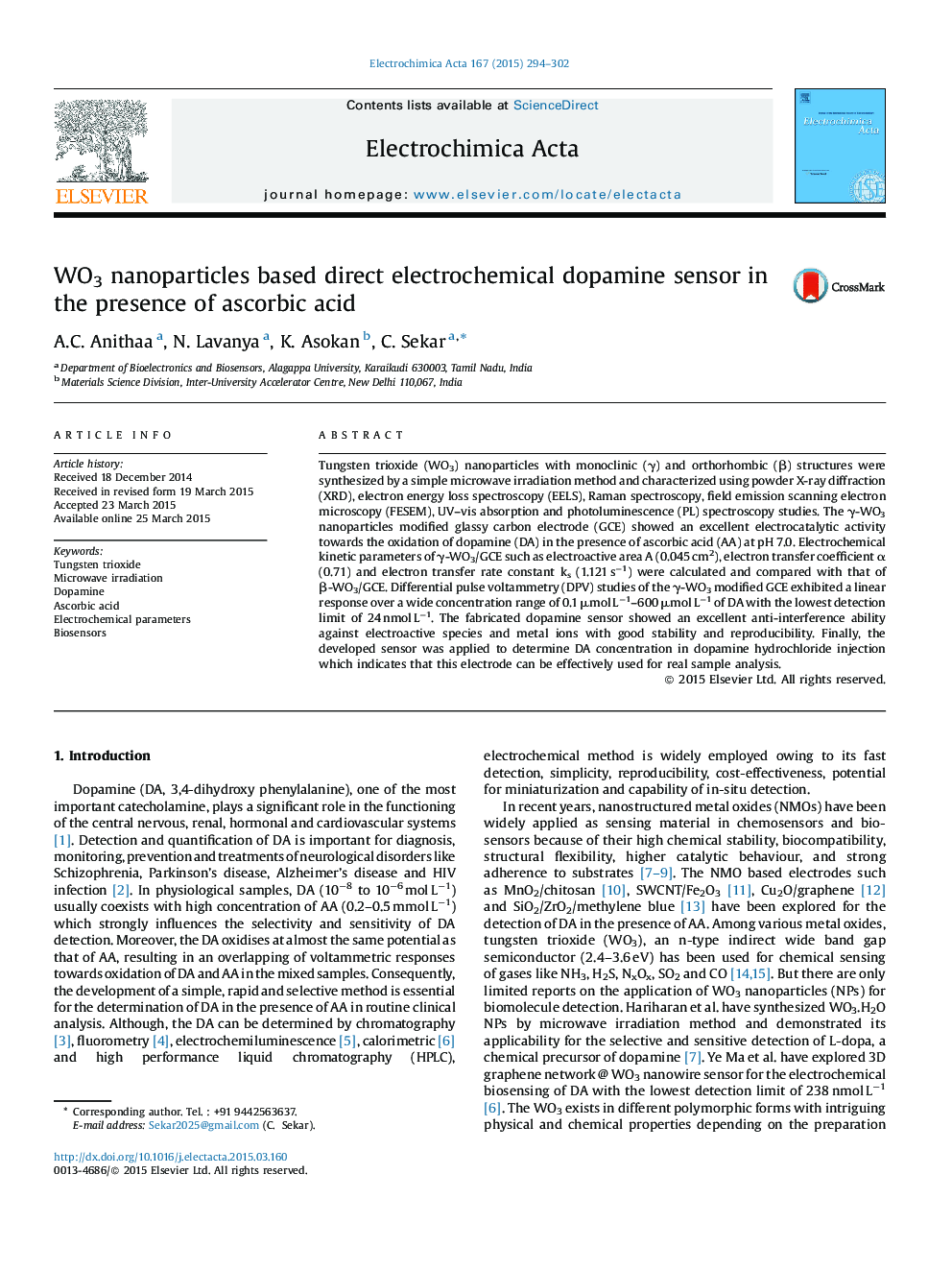| Article ID | Journal | Published Year | Pages | File Type |
|---|---|---|---|---|
| 184355 | Electrochimica Acta | 2015 | 9 Pages |
•This paper presents very simple and mediator-free dopamine detection using ovoid shaped WO3 NPs for the first time.•The fabricated sensor exhibits wide linear range (0.1–600 μmol L−1) with the lowest detection limit of 24 nmol L−1.•This novel sensor is highly selective towards the determination of DA even in the presence of 100 fold excess of AA.
Tungsten trioxide (WO3) nanoparticles with monoclinic (γ) and orthorhombic (β) structures were synthesized by a simple microwave irradiation method and characterized using powder X-ray diffraction (XRD), electron energy loss spectroscopy (EELS), Raman spectroscopy, field emission scanning electron microscopy (FESEM), UV–vis absorption and photoluminescence (PL) spectroscopy studies. The γ-WO3 nanoparticles modified glassy carbon electrode (GCE) showed an excellent electrocatalytic activity towards the oxidation of dopamine (DA) in the presence of ascorbic acid (AA) at pH 7.0. Electrochemical kinetic parameters of γ-WO3/GCE such as electroactive area A (0.045 cm2), electron transfer coefficient α (0.71) and electron transfer rate constant ks (1.121 s−1) were calculated and compared with that of β-WO3/GCE. Differential pulse voltammetry (DPV) studies of the γ-WO3 modified GCE exhibited a linear response over a wide concentration range of 0.1 μmol L−1–600 μmol L−1 of DA with the lowest detection limit of 24 nmol L−1. The fabricated dopamine sensor showed an excellent anti-interference ability against electroactive species and metal ions with good stability and reproducibility. Finally, the developed sensor was applied to determine DA concentration in dopamine hydrochloride injection which indicates that this electrode can be effectively used for real sample analysis.
Graphical abstractFigure optionsDownload full-size imageDownload as PowerPoint slide
